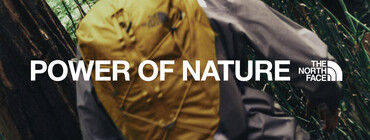VF Corporation Calls for Bold Global Policy to Mitigate Climate Change

The global climate crisis is one of the most significant issues facing humanity. The recent Intergovernmental Panel on Climate Change (IPCC) report clearly articulates that climate change is widespread and rapidly intensifying with some trends now irreversible. Referring to climate change as a “code red for humanity”, the IPCC states the report is a call to action for people, businesses and government to address the threat of global warming to both people and the planet.
As leaders from across business, civil society and government convene at the United Nations Climate Change Conference, COP26, we call for bold action that will drive the global systemic change needed to address the climate crisis.
The time to act is now – in business and in policy. With just eight years left to cut the world’s emissions in half, the moment for debate is gone. The issues are real, proven and impacting communities around the world. We are calling on leaders to act, including:
- Investments in renewable energy, transmission infrastructure, energy efficiency and clean transportation aligned with a 5ºC emissions trajectory.
- Comprehensive approaches to safe, sustainable and circular material choices and circular textile business models with improvements in waste and recycling infrastructure.
- Investments in and incentives for climate-focused agricultural practices that aim to sequester carbon, improve water and air quality, increase soil health, improve wildlife habitat, reduce deforestation and improve the health and livelihoods of farmers.
- Significant focus on environmental and social equity to address the proliferation of climate-related environmental impacts on vulnerable communities.
As we call on governments around the world to act, VF commits to do its part with ambitious moves to achieve our science-based targets as we strive to reach net zero emissions by 2050. Today, we are activating across our direct operations and supply chain, driving emissions reductions globally:
- Renewable Energy: Today, 30% of VF’s owned and operated facilities are powered by renewable energy, and we are on track to reach 100% by 2026. VF collaborates with nominated suppliers to facilitate technical and financial resources to advance energy efficiency and renewable energy projects throughout our supply chain.
- Waste Reduction: As of August 2021, 100% of VF owned-and-operated distribution centers are verified zero waste1.
- Sustainable Materials: We are committed to transition our top nine raw materials to regenerative, responsibly sourced renewable, or recycled product inputs by 2030.
- Regenerative Agriculture: VF and its family of brands are working to integrate regenerative practices and materials into our supply chains across several materials including cotton, leather, rubber, wool and sugarcane. Our Vans®, Timberland®, and The North Face® brands are collaborating to build the first regenerative rubber supply chain in Thailand. Our Smartwool® and the icebreaker® brands collaborated with New Zealand Merino to build the first regenerative wool platform, ZQRX.
- Sustainable Design: All VF brand designers and design leaders have been trained in fundamental circular design theory and they are embedding their learnings into product lines. The Napapijri® brand’s Circular Series is a collection of 100% recyclable jackets thanks to their mono-material composition and is Cradle to Cradle Certified®
We are proud of the work we have done and the positive impacts we have made across our global operations. Yet, we know we have more work to do to achieve our goals.
To continue to accelerate our progress and encourage others to do the same, we, as a global society, need close synergies between business practices and policy frameworks. Market-based, bold policy-driven solutions must be created to drive the type of global systemic change necessary to combat the negative impacts of the climate crisis and limit global warming to 1.5°C to sustain our planet for future generations.









